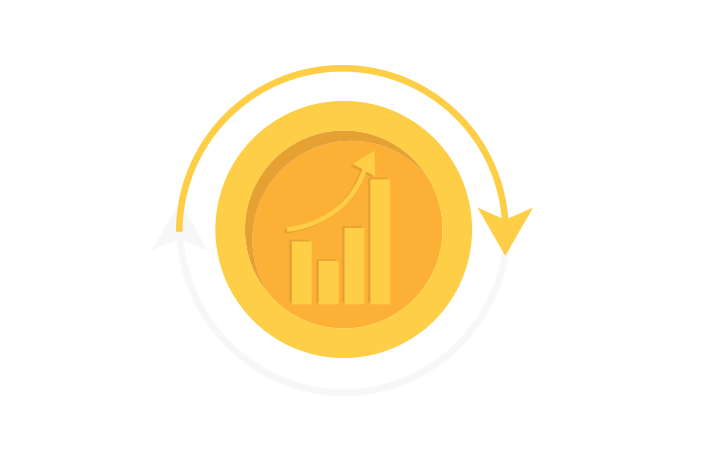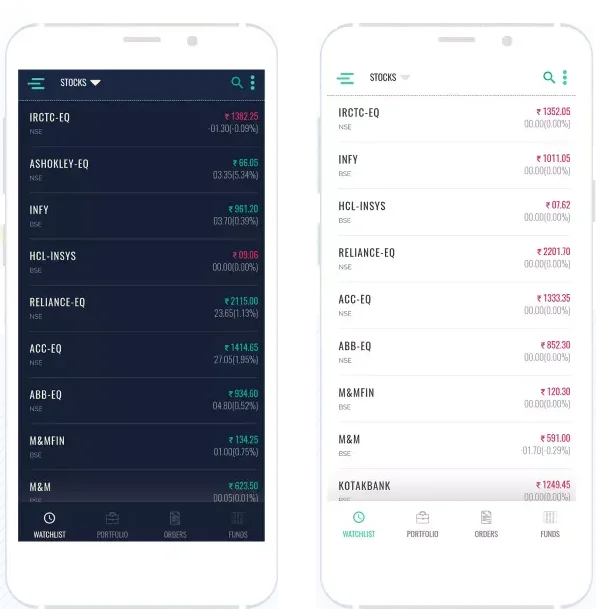What Are Market and Business Cycles?

Investing as a process is never constant it is ever changing and evolving. A successful investment strategy is one in which the investor stays a step or two ahead of the evolving environment and is able to modify or alter his strategy accordingly. While there are many factors that influence the outcome, at a broader level an understanding of Market Cycles and Business Cycles forms the bedrock of a successful investment strategy.
Let’s spend some time to understand what these cycles are and how they can be used.
First the Market Cycle
A market cycle is also referred to as the stock market cycle and the response of the same to economic trends in different business environments.
It is a period when a certain stock or multiple stocks within the same asset class or sectors perform better than others. This is because the prevailing business environment may be more suitable to the company that stock or share belongs to. For example: during a recession, stocks from defensive sectors like FMCG may do better because demand for basic requirements like food and other necessary products can remain unaffected.
How are market cycles formed and identified?
A new market cycle emerges when an existing trend is disrupted by changes in market regulations or new technological breakthroughs. This change need not be across the board but can be industry or sector specific due to new products and regulations.
It is not always easy to identify market cycles or catch the beginning of the end. A market cycle can also be a matter of perspective based on one investment horizon. For a trader, it could mean a week while for long term investors it could be years or decades.
However, for a successful investment, the trick is to identify changes in the direction of market cycles well ahead of time. This is where understanding of macroeconomics and research in sectors a stock plays a big part.
What are the different phases of a market cycle?
A market cycle can go through four different stages. Each stage will influence sectors and stocks differently. If the market cycle is on an upswing and the sentiment is overall bullish then for example companies and stocks in the durable goods or lifestyle space can do well. On the other hand, in a downward trend stock in necessities space will find favour.
Here are the four stages
Accumulation
The accumulation phase starts as soon as the market reaches its bottom. With the market sentiment moving from negative to neutral experienced investors and institutions begin to accumulate stocks. The sentiment can still be bearish but the belief is that the worst is over.
Mark up
The mark up phase is one where an investor needs to be most careful. At this stage, the sentiment moves from being neutral to bullish and can even border on euphoria. New investors enter push up volumes and valuations and could end up holding stocks that do not justify their valuations.
Distribution
At this stage, the market sentiment changes from being bullish to mixed and is also a period when experienced investors start a steady distribution or selling of their holdings. This stage also signals when the market could potentially start to change directions. It can last over several months but a sudden shift in the market sentiment could be triggered earlier due to some event. For example, a War.
Mark down
The last phase in the market cycle is the most dangerous especially for investors who end up holding positions that have moved out of strong hands in this case large institutional investors. Stock prices are normally lower than what they have been acquired at. However, the next accumulation phase is on the horizon.
Now let’s look at a Business Cycle
In a sense, a Business Cycle is at a much broader level as compared to a Market Cycle. A business cycle is an expansion and contraction in the economy of a country over a period of time. It can be measured by the fluctuations in the Gross Domestic Product (GDP) of that country compared to its long-term growth rate.
Tracking a Business Cycle is important because knowing how different asset classes like stocks, bonds, gold, and real estate have historically performed at different stages of the business cycle can help investors identify opportunities and also help mitigate risk if any.
Inflation, interest rates, corporate earnings and other factors which change when an economy expands and contracts in a business cycle have an effect on the performance of investments.
Phases in a Business Cycle
Business Cycles can be different but certain patterns tend to emerge over a period of time which can help identify a phase of the cycle.
Early Stage
This stage is generally characterised by a sharp recovery from recession with economic indicators like GDP moving from negative to positive with an acceleration in growth. Credit flow is higher, interest rates are lower which helps growth in profits.
Typically, during this phase stock returns tend to be higher specifically from sectors like consumer discretionary, real estate and financial services.
Mid stage
The mid stage typically is the longest phase, economic activity gathers momentum but with moderate growth. Corporate profitability also improves. Stocks that are sensitive to interest rates and economic activity find favour during this phase.
Late stage
Here economic activity is at its peak with slowing but positive growth. However, this stage also signals a reversal in the trend of economic activity. There is a shift from economically sensitive sectors.
Recession
Demand across most sectors starts to decline steadily in this phase. There is excess supply in the markets and prices tend to fall. Again, economically sensitive stocks tend to fall with defensives like pharma and FMCG perform better as consumers are less likely to cut consumption in these categories. High dividend stocks begin to find favour.
Investing in Market Cycle and Business Cycle
Companies love an expanding economy with higher spending, profits rise which ultimately reflects in their performance and share price. Investors reap higher returns which creates confidence in the economy. However, as we have seen we tend to go through various cycles and investment has to evolve with these cycles.
While it is difficult to accurately predict cycles for most investors a buy and hold strategy is one that works. This coupled with a rupee cost averaging also commonly known as systematic investment plan (SIP) is one that fits right through the different phases.
Alternatively, for the more adventurous a buy and hold with a tactical asset allocation is what can be looked at to time market and business cycles.
Conclusion
Market Cycles can affect investment performance
Business Cycles measure the growth and decline of the economic activity of a country.
We can understand how various asset classes react to different cycles.
Investment strategies can be formed with a close tracking of the various cycles and their phases.
Frequently Asked Questions (FAQs)
What is a market cycle?
A market cycle is also referred to as the stock market cycle and the response of the same to economic trends in different business environments. It is a period when a certain stock or multiple stocks within the same asset class or sectors perform better than others. This is because the prevailing business environment may be more suitable to the company that stock or share belongs to.
How are market cycles formed and identified?
A new market cycle emerges when an existing trend is disrupted by changes in market regulations or new technological breakthroughs. This change need not be across the board but can be industry or sector specific due to new products and regulations.
What are the different phases of a market cycle?
A market cycle can go through four different stages. Each stage will influence sectors and stocks differently. If the market cycle is on an upswing and the sentiment is overall bullish then for example companies and stocks in the durable goods or lifestyle space can do well. On the other hand, in a downward trend stock in necessities space will find favour.
The four stages are Accumulation, which starts as soon as the market reaches its bottom.
Mark up is the second phase where the sentiment moves from being neutral to bullish and can even border on euphoria.
The third stage is Distribution where the market sentiment changes from being bullish to mixed and is also a period when experienced investors start a steady distribution or selling of their holdings. This stage also signals when the market could potentially start to change directions.
And finally the Mark down or the fourth phase which is the most dangerous especially for investors who end up holding positions that have moved out of strong hands in this case large institutional investors. In this stage stock prices starts to fall, initially slowly and then picking up momentum.
What are Business Cycles?
Business Cycle is an expansion and contraction in the economy of a country over a period of time. It can be measured by the fluctuations in the Gross Domestic Product (GDP) of that country compared to its long-term growth rate.
Inflation, interest rates, corporate earnings and other factors which change when an economy expands and contracts in a business cycle have an effect on the performance of investments.


How Would You Rate This Chapter?
Next
Comments (0)